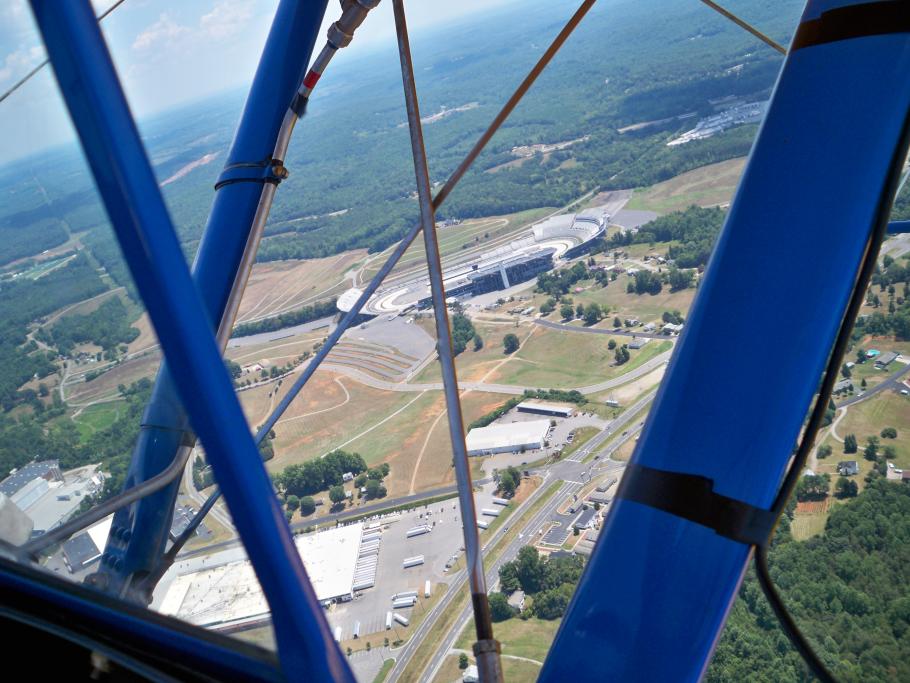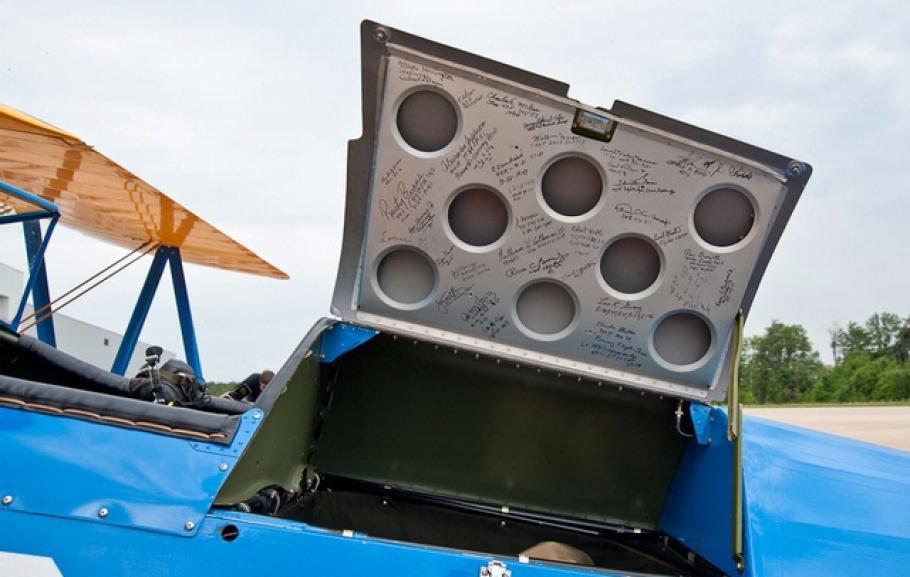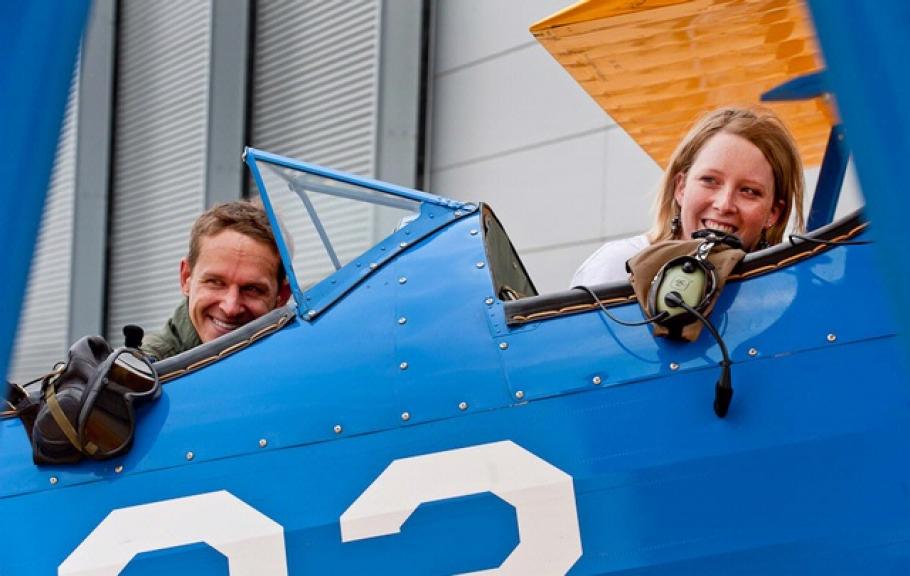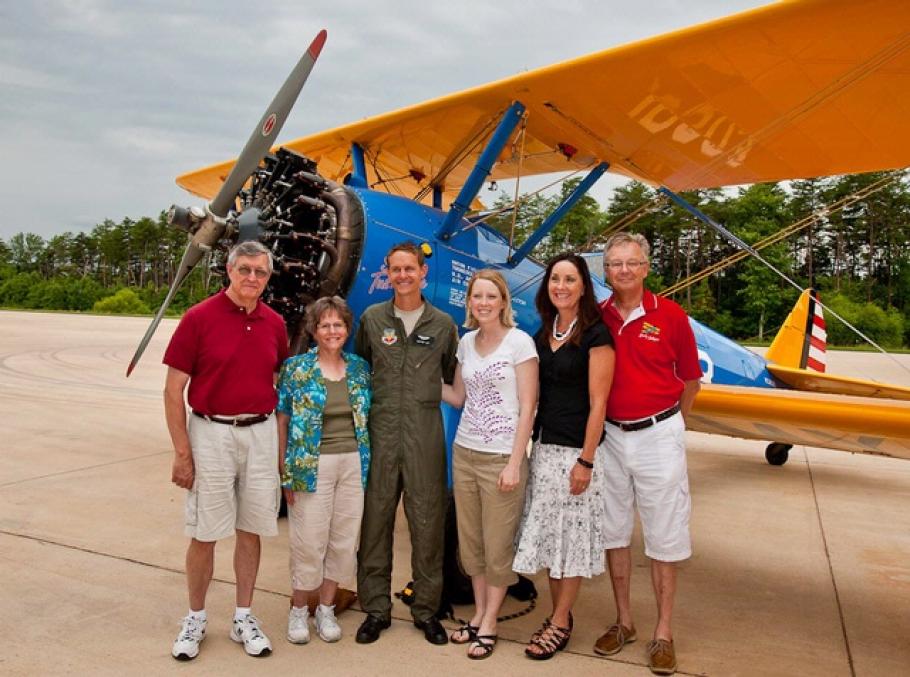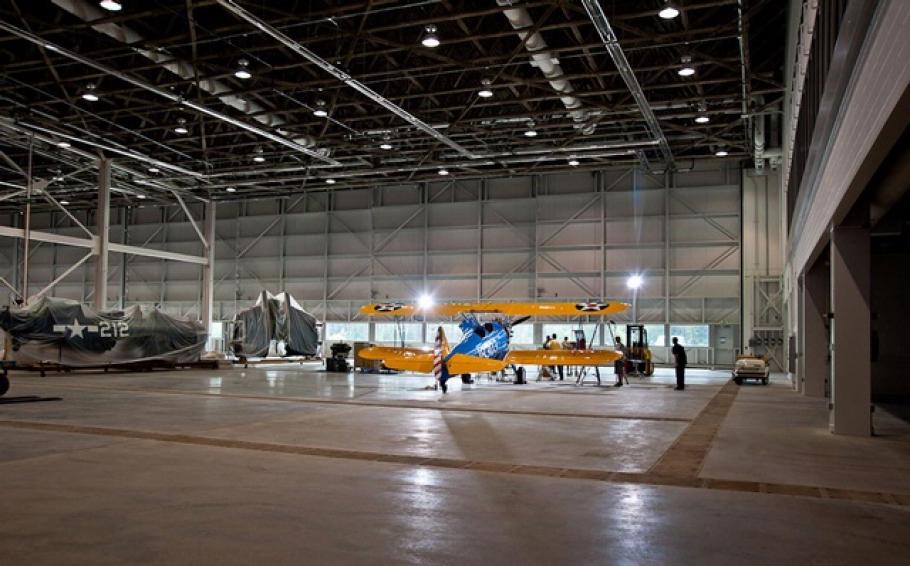During the Stearman trip to DC, while each and every moment created either a new and exciting memory for me or revived one of the old ones from my Air Force flying days, there were two moments that I will vividly remember forever. The first took place after departing the Blue Ridge Municipal Airport near Martinsville, VA. We flew over the NASCAR track at Martinsville, a short track famous for exciting, tight, hard-nosed races and then turned northeast toward Lynchburg. Approaching the Virginia border, I reminded Matt that Appomattox Court House was just a few miles off course to the east. We had discussed the significance of the location before we took off and with excellent weather and some keen eyes we found the McLean House in Appomattox Court House, VA, and flew a few orbits over the very location where Gen. Robert E. Lee had surrendered the Confederate Army of Northern Virginia to Lt. Gen. Ulysses S. Grant—essentially ending the American Civil War.
Martinsville Raceway, Virginia. The only NASCAR track that hosted a race in the first official season of cup racing that still holds NASCAR events today.
Here we were, flying an airplane that had been flown by the Tuskegee Airmen during a conflict that had taken place 80 years after the Civil War—a war that brought an end to the institution of slavery. It was these Airmen who continued the civil struggle. Their struggles resulted in the desegregation of the U.S. military in 1947, and eventually, the entire country. But the real significance of this aircraft really began to sink in at this point. Not only did segregated Tuskegee Airmen fly this plane, but in the past three years, many of those same Airmen had flown in it once again—only now in a racially integrated nation that they themselves had helped to create! It is this contemporary story that is crucial—it is a story of both “history” and “culture” that is to be preserved and documented by the new museum for generations of Americans not yet born. This aircraft represents a nation’s ability to change. It was a humbling moment that we two shared in silence below the purr of the Lycoming engine.
The second moment occurred at the back door of the Mary Baker Engen Restoration Hangar after Matt and Tina flew the final hop before transferring the plane to the Smithsonian. After eight hops, eleven hours, 800 miles, and countless visual and physical experiences during the journey north, I fell in love with the Stearman. The freedom of the open cockpit, the smells, and the historic significance of this plane, the skill and whit of a youthful Air Force pilot, the exhilaration and just plain fun of the entire experience—it was miraculous! But the moment that I will always remember was when Matt and Tina, having just ferried the Stearman from Andrews AFB to Dulles Airport, removed their flight headgear for the final time and looked over at the small group that had gathered at Hazy for their arrival. It looked to me like a few tears had been shed during the taxi from Dulles, through the taxiway gate, and to the restoration hangar. For six years, this young couple—an active duty USAF Captain and a full time sales rep—had invested blood, sweat, money, time, research, and now tears into this artifact and it was part of the Smithsonian’s National Museum of African American History and Culture’s collection where it will continue to tell the Tuskegee Airmen’s story. I must say, when Matt and Tina’s parents joined them at the aircraft with hugs and pride bursting from their faces, my happy tears stained the tarmac along with rest of them. Matt and Tina were giving up their baby, and they knew it. After just a few short hours flying in that plane, I understood the emotions—a part of that Stearman will stay with me forever.
Soon the Spirit of Tuskegee will move from the restoration hangar to the south end of the Udvar-Hazy Center where it will remain on display until 2014. Then it will be moved to the exhibition space of the not-yet-built National Museum of African American History and Culture.
The PT-13D Stearman Spirit of Tuskegee parked inside the restoration hangar awaiting retrofit for display
In future installments, I’ll recount some of the really fun, funny, and awesome trip happenings, some background on the collaborative efforts that have taken place within the Smithsonian that made this acquisition possible, and also fill you in on the aircraft retrofit and display location at UHC.
